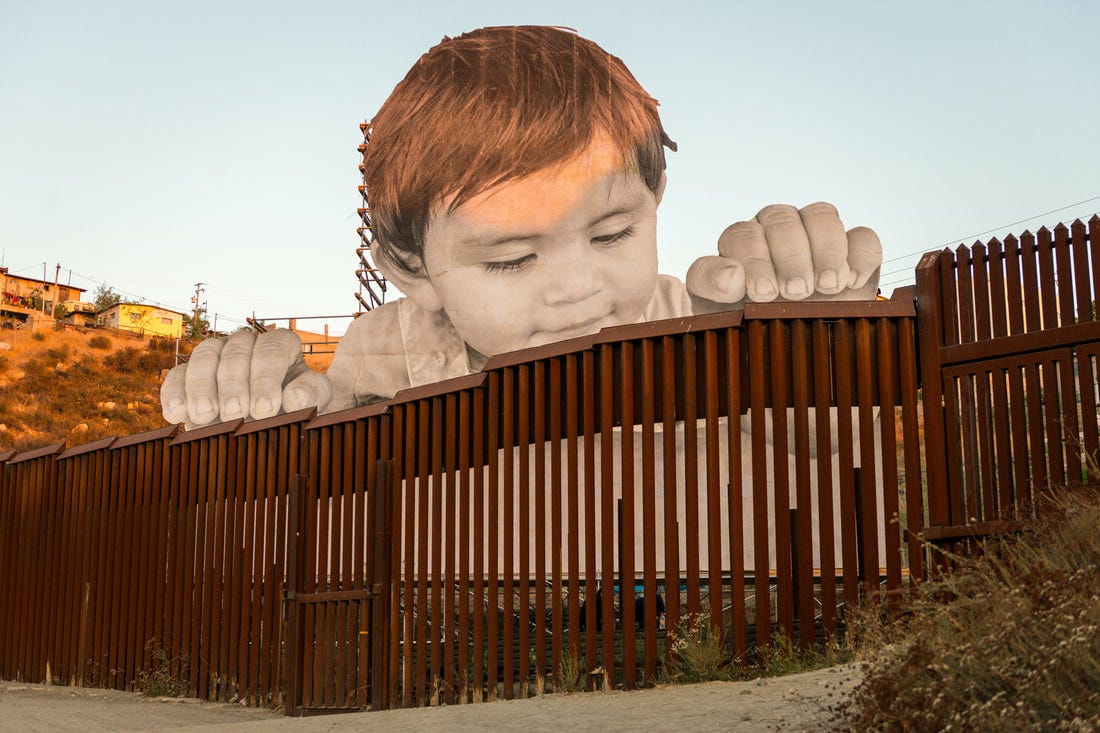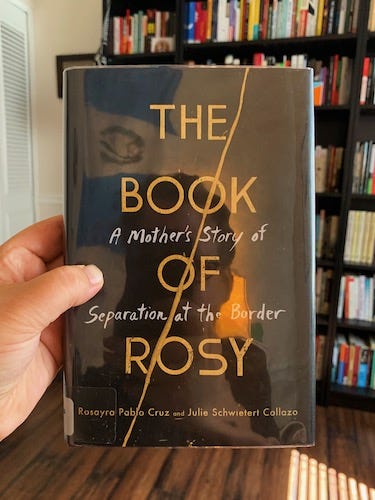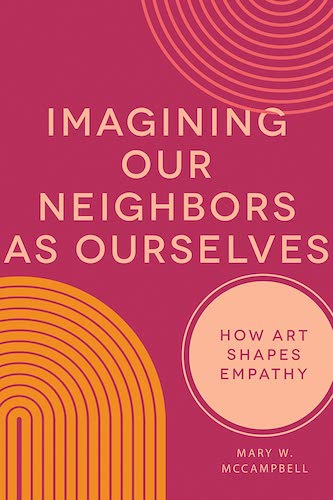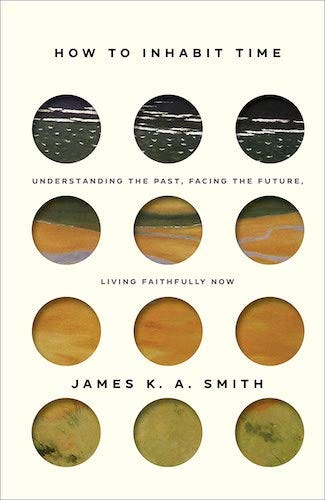[The Bookshelf #65] Imagining Our Neighbors as Ourselves
Why empathy and art can be matters of life and death
“Giants, Kikito,” a 2017 installation at the border between Mexico and the United States by the French artist JR. My friend Scott Bennett, a photographer in San Diego, graciously gave me permission to use this photo. The connection between art and empathy is on full display in the work of both of these artists.
When I think about the authors who most shaped my imagination and my conscience during my early to mid-twenties, the names Frederick Buechner and Ron Sider come to mind. That period of life was a consequential one—finishing college, seeing the world, starting a career—and the work of these two men informed so much of what I was up to at the time.
Both of these heroes just died within three weeks of each other: Ron Sider, 82, on July 27 and Frederick Buechner, 96, on August 15.
I never met Buechner, sadly, but I did have one brief conversation with Ron Sider. It was at chapel at Eastern University, circa 2008, and I was a grad student. Kristyn, a mutual friend at the organization Ron founded, introduced us. I don’t remember much of the conversation itself, though I’m sure I said thank you, for everything. Here’s what else I can tell you: Ron was soft-spoken and unassuming, despite his reputation for penning jeremiads. He had thick glasses and an even thicker mustache, just like he does in every photo of him. His clothing was blessedly forgettable; the color beige comes to mind. When I think of him, he will always be smiling.
Even when we don’t know authors at any level of personal depth, it’s sad to think of a world in which they’re not out there, somewhere, writing books we’ll eventually hold in our hands and read. It’s in precisely that sense that I’m going to miss Fred and Ron.
Give rest, O Christ, to these servants with your saints.
What I’ve Read Recently
“Among the many things that people don’t understand about migration is this: No one wants to leave the people they love. Most people don’t want to leave the land where they were born, or the soil where their umbilical cord was buried. If they believed that staying would ensure survival, they would never set off on such a treacherous journey.”
That’s Rosayra Pablo Cruz in The Book of Rosy: A Mother's Story of Separation at the Border (HarperOne), coauthored by Julie Schwietert Collazo, and it’s something I’ve heard in conversations time and again. I heard versions of this when I worked with Cuban refugees in Pennsylvania. I’ve heard it here in Phoenix among asylum seekers from places like Colombia and Venezuela. And I hear it from people in the communities where 1MISSION works in Mexico: “No one wants to leave the people they love.” That is, unless they feel they no longer have a choice.
It’s difficult for many of us to grasp the impossible choices that vulnerable families are forced to make to survive. This is why I’m especially grateful for books like this one, cowritten by a Guatemalan woman who sought—and was granted—asylum in the United States.
After making the arduous journey north through Mexico and into the United States, Rosy is separated from her sons at a prison in Eloy, Arizona. They are apart not for a matter of hours or days, but for months. Meanwhile, Rosy is left in limbo, in every sense of the term. “The isolation, the desolation…” she writes, “this is why the prayer circles [among detainees] are sustenance, a ray of light and a breath of hope in an otherwise dark and airless existence inside Eloy. If my own prayers are not sufficient—and I’d begun having some doubts that they were effective—I feel certain the collective invocations of so many mothers could reach God’s ears and touch His heart.”
This particular story has a happy ending. But not all stories like Rosy’s do. While the ability to seek asylum is a right guaranteed by law, nearly two-thirds of asylum seekers in the United States eventually have their cases denied.
As Rosy and her sons are reunited in New York (that’s where the sons had been sent by the powers that be), we find them being cared for by a Jewish community of people who understand, in their bones, what it means to be a stranger in a strange land. Rosy is not yet legally allowed to work, but her sons enroll in school, and Rosy surprises everyone—including herself—by running for and being named co-president of the school’s PTA.
“We are grateful for any support,” Rosy writes of the family’s experience in their new home, “but we’re not waiting for a handout. We want to be part of your American dream. We want to help you realize it. We want to share in it with you.”
What I’m Reading Now
I’m less than twenty pages into this one, but already Mary W. McCampbell has won me over with Imagining Our Neighbors as Ourselves: How Art Shapes Empathy (Fortress). Let’s just say that Graham Greene’s “whiskey priest” makes an appearance on the very first page; an auspicious start to any book, if you ask me.
Empathy, as McCampbell defines it, means entering into another’s pain. (As opposed to sympathy, which gives us the luxury of looking down on people we can’t be bothered to understand.) Her claim in this book, as I understand it so far, is that works of art like books, movies, and music can expand our imaginations and help us love our neighbors.
Can, not will. It’s never automatic; empathy requires cultivation. It takes practice. You don’t need me to remind you that the Nazis had loads of great art—novels on their bookshelves, symphonies in concert halls—and none of that stopped them from doing Nazi things.
In the literature classes McCampbell teaches at Lee University, she is careful to remind her students that “the authors of the books we are reading—whether the books were written in 1603 or 1994—are human beings created in God’s image. These image bearers have something important to say to us, and if we submit ourselves to their voices, we will have the privilege of seeing life through their eyes.”
The privilege of seeing life through the eyes of another. What a gift indeed!
“Good art challenges us into having eyes to see our neighbors, and many times, these neighbors look, speak, and live very differently than we do,” she writes. “Sometimes they might even be considered our enemies.”
What I Might Read Next
Here’s one I’ve really been looking forward to: How to Inhabit Time: Understanding the Past, Facing the Future, Living Faithfully Now (Brazos) by James K.A. Smith, releasing September 20. This is an author with a long track record of writing books that are important, often both winsome and provocative, with every word carefully chosen. I’ve intentionally avoided reading anything about this one. I can’t wait to be surprised by whatever he’s got in store for us this time around.
If you enjoy these reflections, please pass them along.
And as always, thanks for reading.
Tim







